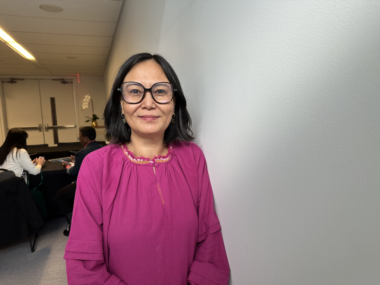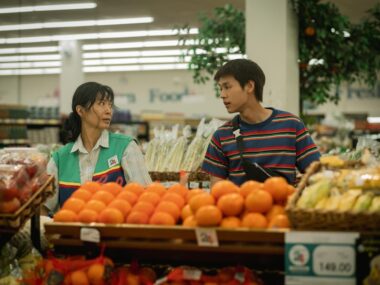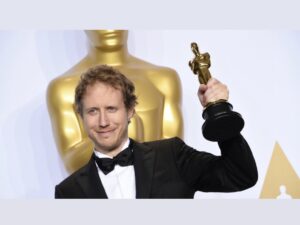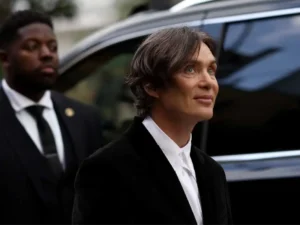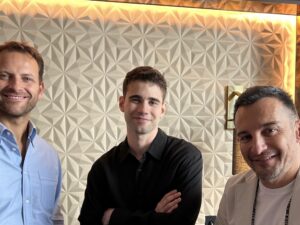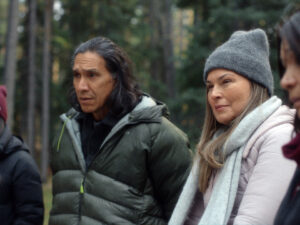In his art, Andrew Ahn never shies away from challenging the conventional notions of gender and sexuality, while simultaneously embracing the necessity of expressing the relevance of fluidity in today’s world.
His 2016 coming-of-age movie Spa Night and 2019 feature Driveways, which emphasizes the significance of neighbourly relationships, received tremendous acclaim.
This year, he made a rather audacious comeback highlighting the vitality of the LGBTQ+ community by remaking Ang Lee’s 1993 film The Wedding Banquet. Andrew directed and co-wrote the screenplay with James Schamus, who had previously written the original 1993 version.
The 2025 version traces the story of four individuals who reside together: two men, Chris (Bowen Yang) and Min (Han Gi-chan) who love each other; and two women, Lee (Lily Gladstone) and Angela (Kelly Marie Tran) who love each other. However, owing to specific circumstances, one homosexual man and his lesbian buddy decide to get married specifically for the purpose of giving him a green card marriage in exchange for her receiving financial support to undergo IVF procedures. The jeopardy commences when Min’s grandma unexpectedly arrives in New York, insisting on a highly-publicized wedding.
One Lash Shot had the opportunity to discuss with Korean-American Director Andrew Ahn the dynamism of possessing and embracing a queer identity in today’s rapidly altering modernity as compared to the situation in the past.

How did you approach the reimagining of Ang Lee’s film? I heard you didn’t even want to consider a traditional remake. However, you did end up writing the script with James and Neil Peng, both of whom were part of the original work.
Yeah, you know, Ang Lee’s The Wedding Banquet was the first gay film I ever watched. I hold it in such high regard. And it’s a really meaningful movie in my life.
So, I was very hesitant to reimagine this movie. But I realized that so much has changed for the queer community since 1993.
And what’s changed is a really big part of my life right now—the phase of my adulthood where I am thinking about marriage and thinking about children. These are active questions that I am exploring with my boyfriend.
So, I used this personal experience— this moment in my life to be my creative North Star in this reimagined version. By making it more personal, I felt like I had a reason to do this. I could justify its existence instead of just trying to remake something for the sake of remaking it.
So, I adopted so much of the original themes and the kind of storytelling philosophy of the Ang Lee film, but with some modern questions now thrown into the mix.
So, I’m assuming you might have empathized a lot with Min’s character more than Chris, right?
Yeah, you know, I mean, I think each character is a version of myself in some ways. It’s kind of reductive to say this— but in my life: I am the Lee and the Min and my boyfriend is the Angela and the Chris.

Why was the film shot in Vancouver and not in the US? If I recall, the character of Min was seeking a green card, not a Canadian PR.
Yeah, you know, I had originally written the screenplay with James to be set in Los Angeles because that’s where I came of age as a gay man. It’s where home is for me. But you know, it’s the economics of filmmaking right now.
The producers looked at the script and our schedule and realized that it would be only feasible to make it in Canada. And we chose Vancouver because there was something about the Pacific Northwest that was really inspiring. We kept it an American city owing to some of the nuances with the immigration stuff. So, we chose Seattle.
But it really worked out kind of beautifully. Partly because Lily Gladstone grew up in Seattle. And when she heard about that change, it really inspired her. And she wanted to make the character indigenous, make her Duwamish. We went down to Seattle during pre-production. And Lily gave us a tour of Seattle— pointing out the different neighbourhoods, where these characters might live.
She gave us a personal history tour, a family tour, and an indigenous history tour. It was incredibly inspiring.
I asked her, where do people go to get food after a night of drinking? She said, “They go to Dick’s!” So, we put that into the movie.

It really felt like the spirit of the film wanted us to make the film there.
In your opinion, in today’s world, is it possible to co-exist so seamlessly as part of the LGBTQ+ community, like you portrayed towards the end of your movie specifically?
Yeah. You know, I think that coexistence in a community/family is something that we need to value and we need to understand it is very difficult to build. These characters in this film love each other so much. But despite the abundant love, it’s still hard for them.
I think that creating bonds requires some conflict, requires some drama. And I think sometimes we flinch, and it scares us, and we back away.
But I wanted to show through this film that if you really love each other, you can go through that difficulty and come out the other side more in love with each other. I talk about how this film for me is so much about how we fight each other but also fight for each other.
And I think that really is something that we need to remind ourselves of constantly. And that once we kind of grow our families as queer people, we celebrate that— we don’t take it for granted.
Hopefully, whether you’re queer or you’re not– when you see this queer family, you will really understand how beautiful it is and how much we need to protect it.
[Author’s Note: Thank you Andrew for bringing such a dynamic re-imagination of this story! Can’t wait to watch ‘A Sprinkle of History’!]


